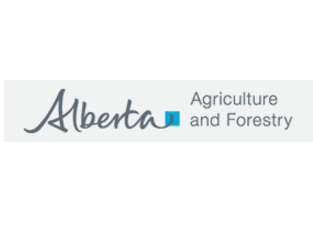Source: Alberta Agriculture and Forestry
Feed suggestions for animals that have lost condition or dropped weight due to frigid temperatures this winter.
“Animals that are kept outside – be they cattle, bison or horses – all increase the amount of feed they consume during the cold weather,” explains Barry Yaremcio, beef and forage specialist at the Alberta Ag-Info Centre.
“This is to increase the amount of heat that is generated during the digestion process, to stay warm. Using beef cattle as an example, if temperatures drop below -20 C, feed intake can increase by 5 to 30% compared to a warmer day.”
Because of the cold, Yaremcio says that some producers are noticing that their haystacks or silage pits are emptying a lot faster than during warmer temperatures. However, he says that producers have some options even if feed supplies are limited.
“Cows in late pregnancy can be fed a certain amount of straw per day, which is no different than before the cold weather. “However, the straw cannot be the total increase in feed supplied because it is low in protein and high in fibre, which reduces digestibility and rumen efficiency. Good quality hay and additional grain is needed as part of the additional feed supplied. Adding 2 lb of grain per head per day at -30 C and 4 lb of additional grain at -40 C is a good starting point.”
“Managing the protein content, calcium and phosphorus, magnesium, trace minerals and vitamins are all important to provide a balanced ration. Hay quality overall is down considerably this year compared to the 5-year average. Protein is 25 to 30% lower than normal and energy content is 15 to 20% lower.”
He says that this year, adding extra grain may not be enough. In many situations, supplemental protein is also needed.
“Cows in late pregnancy need a 9% protein ration (dry basis) and 11% after calving. In previous years, adding roughly 10 lb of straw per day to a pregnant cow ration, with the remainder being silage or hay along with barley grain at 4 to 6 lb was generally sufficient.”
“This year, it may be necessary to feed 1 to 2 lb of canola meal, fababeans, feed peas, distillers grains or a commercial 32% supplement in addition to the grain. Supplementation of protein and energy will depend on the quality of the other feeds and forages.”
Yaremcio says that after calving, if at all possible, do not include straw in the ration.
“If it is necessary, the ration should contain a minimum of 11% protein on a dry matter basis. It is possible that feed intake will decrease due to the higher fibre levels in the diet will take longer to digest.”
“Changing and adjusting the feeding program when including lower quality straw is critical. It is possible that calcium and magnesium levels will be low, creating a concern with downer cows or milk fevers.”
Feed test results are needed to balance the type and amount of mineral provided to the cows, and he adds to keep an eye on the animal’s body condition score.
“When a cow loses body condition score prior to calving, the energy availability the cow to produce milk after calving is reduced because there is less fat to mobilize off her back in addition to the feed that is providing them with energy.”
“If the cow can’t mobilize the extra fat to get energy to produce milk, peak milk production is going to go down. If you lose 2 lb of milk production off the peak at 8 weeks after calving, your loss of milk production over the entire length of that lactation period is going to be down that 2 lb. It is not just the peak that is lost, but the 2 lb all the way through.”
“If cows are losing weight between calving and when the bulls are turned out, it takes longer for the cows to start cycling, and first service conception rates go down,” explains Yaremcio. “Therefore, you are either going to have a bunch of calves born later in the calving season next year, or that cow might be open and goes to market.”
Yaremcio says that bringing the cows back into condition will take a little more attention to details.
“Get some extra help working through current rations, or you can also use CowBytes. Readjust the rations as soon as possible, so the cow has more time to get back into condition before the breeding season begins.”
“Feeding an extra 2, 3 or 4 lb of grain a day over above what is fed in warmer conditions is a starting point. The extra grain will help increase weight gains by about one-half to three-quarters of a pound a day. That is over and above fetal and placenta growth for cows in late pregnancy and some weight gain for lactating cows.”
Yaremcio’s Agri-News article Cattle and cold temperatures from January 13 outlines how to lessen the stress on animals during cold weather.
Contact
Connect with the Alberta Ag-Info Centre:
Hours: 8 am to 5 pm (open Monday to Friday, closed statutory holidays)
Toll free: 310-FARM (3276)
For media inquiries about this article, call Alberta Agriculture and Forestry’s media line:
Phone: 780-422-1005






